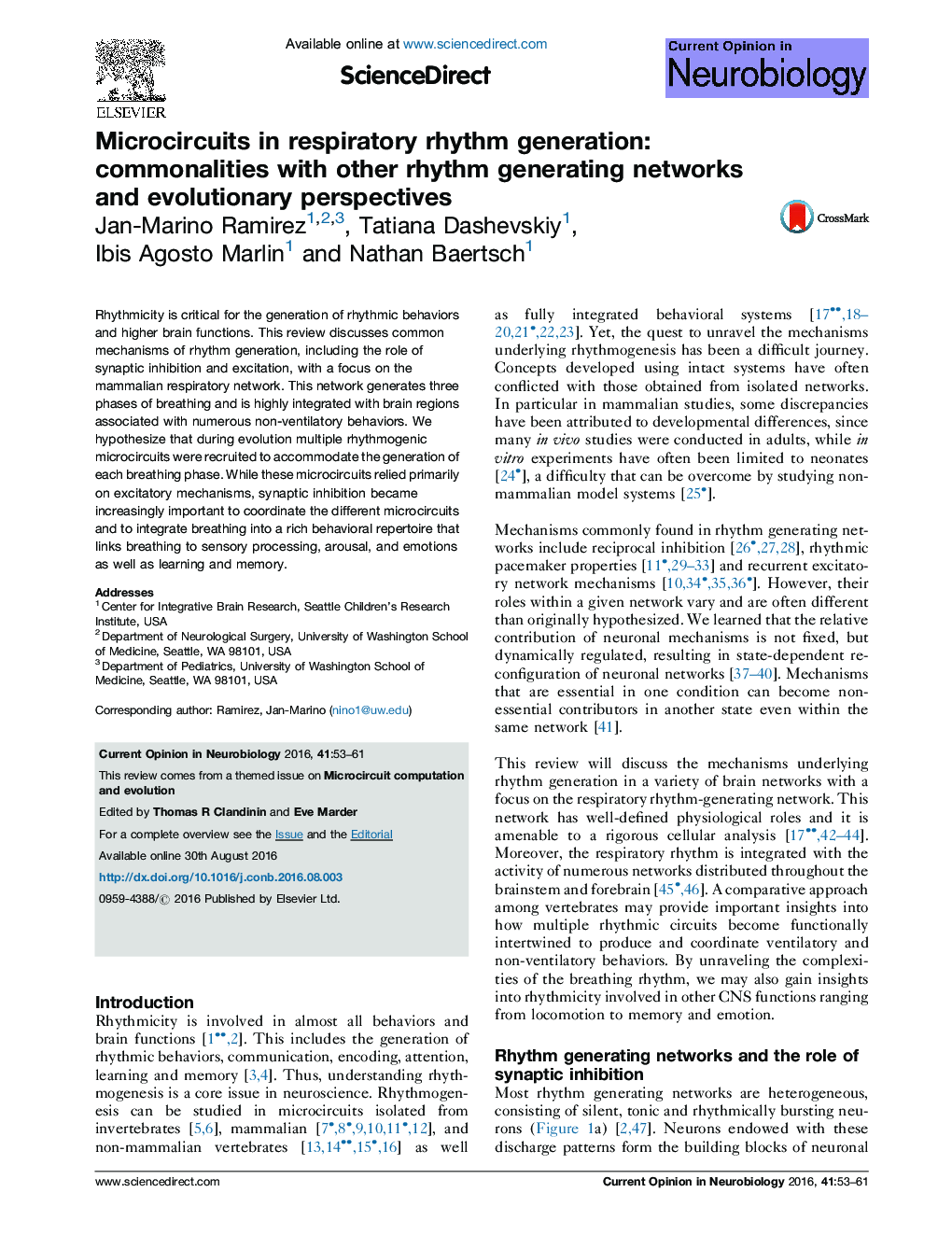| Article ID | Journal | Published Year | Pages | File Type |
|---|---|---|---|---|
| 6266100 | Current Opinion in Neurobiology | 2016 | 9 Pages |
â¢Excitatory mechanisms are critical for rhythmicity in respiratory microcircuits.â¢Inhibition shapes activity within and between distinct rhythm generators.â¢Each phase of breathing in the mammal is associated with its own CPG.â¢CPGs may have been recruited during evolution, increasing breathing complexity.
Rhythmicity is critical for the generation of rhythmic behaviors and higher brain functions. This review discusses common mechanisms of rhythm generation, including the role of synaptic inhibition and excitation, with a focus on the mammalian respiratory network. This network generates three phases of breathing and is highly integrated with brain regions associated with numerous non-ventilatory behaviors. We hypothesize that during evolution multiple rhythmogenic microcircuits were recruited to accommodate the generation of each breathing phase. While these microcircuits relied primarily on excitatory mechanisms, synaptic inhibition became increasingly important to coordinate the different microcircuits and to integrate breathing into a rich behavioral repertoire that links breathing to sensory processing, arousal, and emotions as well as learning and memory.
